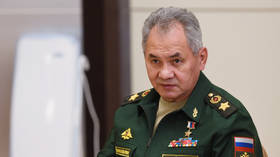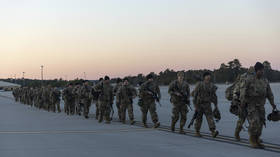NATO has doubled troops on border – Russia

The number of NATO forces stationed close to Russia’s western borders has reached more than 30,000, the country’s Defense Minister Sergey Shoigu said on Wednesday.
He stated that the US-led military bloc had augmented units in Central and Eastern Europe, as well as in the Balkans and Baltic states.
“The contingent has grown in size by two and a half times to more than 30,000 people since February, and may grow more in the nearest future,” Shoigu said during a joint ministerial session with military officials from Belarus.
He said that such a concentration of Western forces poses a threat not only to Moscow, but to Belarus, Russia’s ally.
The defense of both countries is a “priority task” of the Union State of the Russian Federation and Belarus, he stated.
The West’s ultimate goal in its confrontation with Russia is to “destroy its economy, military potential, and to deprive it of the ability to conduct independent foreign policy,” Shoigu said.
In response to Russia’s campaign in Ukraine, NATO enhanced military units and weapon stockpiles in the east as a “deterrence” measure. The bloc described Russia as “the most significant and direct threat” to peace and security in its chief strategic document, which was updated in June.
NATO Secretary General Jens Stoltenberg said at the time that the bloc’s rapid-response force would increase sevenfold to over 300,000. The bloc also agreed to establish four new battalion-size battlegroups in Slovakia, Hungary, Romania, and Bulgaria, in addition to those in Poland, Lithuania, Latvia, and Estonia.
Russia and Belarus announced the creation of a joint military force last month, which was said to include several thousand Russian troops. Belarusian President Alexander Lukashenko linked the move to tensions with the West. The first trains carrying Russian soldiers arrived in Belarus on October 15.
According to the Belarusian Defense Ministry, up to 9,000 Russian soldiers and around 170 tanks will be deployed in the country. The first trains carrying Russian soldiers arrived in Belarus on October 15.
In his speech on Wednesday, Shoigu said that the alliance with Minsk is especially important amid the “growing tensions across the world,” and the standoff with the West. He added that Russian and Belarusian units are training together, while the two states are conducting joint military planning as part of the new force.













